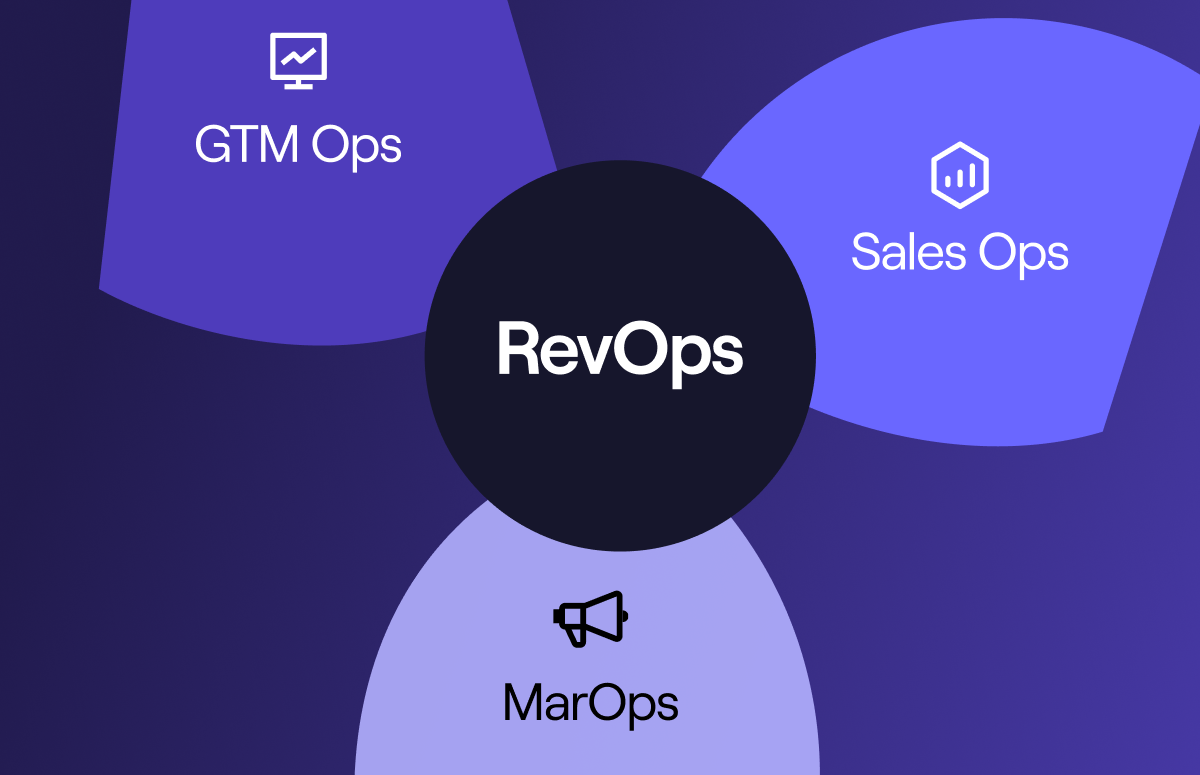10 Revenue Growth Strategies to Increase Sales
Top 10 revenue growth strategies:
Most business goals can be simplified into two main categories: increasing revenue and closing more sales.
To hit both of those goals, you need effective revenue growth strategies.
With the right strategies in place, like training your sales team and creating effective marketing campaigns, increasing your sales and revenue doesn’t have to be a challenge.
In this post, we’ll discuss ten revenue growth strategies, giving you actionable insights and expert advice to help you implement them right away.
Is revenue growth a top priority?
For many businesses, sustainable revenue growth is a top priority. However, as the fiscal year progresses, other tasks, like hiring new team members, sometimes take over.
But if you want your business to succeed, you need to prioritise revenue growth. Without new revenue, your business growth will stall.
You can use several strategies to increase your sales and close more deals. We asked a few experts to share their insights, helping us create a list of proven revenue strategies.
👉 If revenue growth is your top priority, review how Cognism can help your RevOps strategy by optimising your resources and building a better pipeline.
10 revenue growth strategies to try
1. Give free value
Providing free, actionable value might sound counterintuitive to sustainable growth.
However, it’s the exact opposite. When you offer no-strings-attached value, other than maybe asking for an email address, you’re working to build trust with your target audience.
Trust goes a long way when it comes to converting a lead into a sale.
Raviraj Hegde, Senior Vice President of Growth and Marketing at DonorBox, said providing free content has transformed his business:
“Giving value upfront for free has changed everything. Things like our nonprofit fundraising guides show that we can be trusted and know our stuff. That has resulted in increasing inbound leads by 30%, plus bolstering our position as a trusted partner in that same period.”
Looking for an idea of the free value you can offer? Consider these:
- Offer a free trial of your product or service.
- Offer free tools, either as an addition to your product or stand-alone tools.
- Create free resources, like guides.
- Host free webinars.
In short, free value can help bridge the gap between a passing lead and a conversion.
2. Test different pricing structures
When it comes to pricing strategies, one-size-fits-all pricing isn’t always the best.
A fixed pricing structure can knock out qualified leads who may lack the budget for your product or service, leaving your sales team behind in their monthly or quarterly sales goals.
Instead, test out various pricing structures to find the best one that meets your customers’ needs. You can try:
- Value-based pricing: Use this strategy to help price your product or service based on how much your customers are willing to pay. You might need to conduct a customer survey to determine this price.
- Dynamic pricing: Finding the market a little tight? So are your customers. Use dynamic pricing to adjust your fees based on market conditions.
- Tiered subscriptions: If you want to offer multiple tiers to your product or service, a subscription model might be your best bet. With tiered subscription pricing, your customers only pay for the products or services they need.
Pricing optimisation - adjusting your pricing for your customers - is a good way to be more transparent and offer your customer base something they’ll respond to. It can be an effective revenue strategy.
3. Focus on customer retention
It’s much easier - and cheaper! - to upsell to your current customers than it is to gain new ones. Plus, existing customers tend to make more purchases than new customers.
According to insights from Smile.io, the top 5% of your customers generate as much as 35% of your revenue, making customer retention a high priority.
There are several strategies you can implement to help increase customer retention:
- Implement a customer loyalty program to reward customers for their purchases.
- Provide exceptional customer service - prioritise high-need customer support tickets and make an effort to respond to all queries as quickly as possible.
- Introduce a referral program.
The bottom line:
Shifting your focus to existing customers can have a positive impact on your revenue growth rate.
4. Maximise sales efficiency
It’s not entirely a secret that your sales team is the backbone of all your revenue generation efforts.
That’s why it’s critical that your sales team is efficient and properly trained to do their job: close deals.
If you find your sales reps lacking in their selling skills, it’s time to give them adequate training. Jon Morgan, CEO and Editor-in-Chief of VentureSmarter, said:
“Getting into some top-notch sales training programmes is a must! Giving our team the snazziest tools and tricks has pumped up sales efficiency by 20% and led to a sweet spike in closed deals. Staying sharp keeps our team on its toes and ready to dance with market shifts!”
Your sales team might benefit from learning more about:
- Active listening.
- Building rapport.
- Objection handling.
- Time management.
- Product knowledge.
- The ins and outs of your CRM.
Take some time to plan sales training sessions. Although it may require some coordination and calendar management, it will be beneficial in the long run.
A well-trained selling team will consistently meet its business objectives.
5. Personalise your marketing
If sales is the backbone of your business, your marketing team is the hands and feet. Your marketing efforts go a long way in supporting sales by getting your brand in front of the right target customers.
Strategies like SEO, pay-per-click advertising, and social media marketing can help raise your brand’s awareness. With compelling, personalised copy and glowing testimonials from satisfied customers, you can create enough interest to convert passing visitors into qualified leads.
However, you don’t want to leave your leads hanging and hope they’ll decide on their own to do business with your brand. Instead, take Raviraj’s advice and try hyper-personalised outreach.
Raviraj uses customer data to drive value to prospects. He said:
“We look at customer data, compose messages directly alluding to the struggles and goals of each segment, and send them out.”
“For example, nonprofits focused on education receive resources and solutions relevant to their mission. This personalisation increased our email response rates by 40% and demo bookings by 20%. It’s proof that targeted communication works.”
6. Combine sales and marketing
Your sales and marketing teams have to work together, there’s just no way around it.
Raviraj said his company noticed a growth in revenue when it combined its sales and marketing strategies:
“The other best factor has been the alignment of sales and marketing. We regularly have coordination meetings wherein both teams understand the insights of others and the goals being pursued.”
“This can also be reflected in how marketing delivers highly qualified leads that the sales team nurtures quite effectively. This has eventually led to a quicker sales cycle with much higher conversion rates.”
Pro tip:
Block off time on your company calendar to have a combined sales and marketing meeting. Ensure you create revenue growth goals shared between departments.
7. Automate tasks with AI
Automating certain tasks with AI is a surefire way to increase your sales revenue.
AI sales tools can take some of the mundane, everyday tasks off your teams’ plates, freeing them up to focus on more important tasks.
In fact, according to a survey by HubSpot, automating tasks with AI can save your sales team anywhere from one to five hours in the working week.
What can AI do? How about some of these:
- Reduce time spent on data input.
- Create better, more personalised email marketing.
- Conduct quicker, more efficient research into market dynamics and trends.
Did you know that Cognism is powered by AI? It comes with an in-built AI Search feature, and its Sales Companion provides reps with all the data they need when and where they need it.
To use the AI Search feature, simply type (or speak!) your request into the search bar, and Cognism will give you lists of potential customers in no time at all.
It’s a surefire way to speed up your prospecting! Take an interactive tour to see how it works 👇
8. Create strategic partnerships
If you really want to drive sustained revenue growth, consider creating strategic partnerships with influencers and affiliates.
Influencers and affiliates are always looking for additional revenue streams. By joining forces with those open to partnerships, you get your brand in front of a broader audience with proven marketing potential.
Because an influencer’s audience trusts them, promoting your brand will lead them to trust you, too.
Michelle Nguyen, Product Owner and Marketing Manager at UpPromote, offered some great advice for creating relationships with partners: be choosy and look at all their metrics.
She said:
“Building strong affiliate partnerships has been the cornerstone of our revenue growth strategies at UpPromote.”
“I started by making a strict process for checking out affiliate partners. This meant looking at more than just the number of followers or website visitors. We began to look at their engagement rates, the types of people who were following them, and most importantly, how real their connection with their followers seemed.”
“One of our best partnerships came from a micro-influencer in the wellness space who had just 20,000 followers but a very active audience. Their conversion rates were always three times higher than those of our bigger affiliates.”
“When people ask me what the key to successful affiliate partnerships is today, I always say the same thing: quality over quantity, real connections over follower counts, and real engagement over vanity metrics.”
9. Offer new products or services
Creating new revenue streams can be tricky. However, one effective strategy is to add a new tool or service to your existing product line.
You won’t want to add just any tool or service, though. Randomly adding new product offerings can confuse your customers and make it look like you’re just after a quick profit.
Instead, take the time to talk with your current customer base. You must fully understand their needs and pain points.
Based on their feedback, brainstorm innovative product ideas with your team. Check on your competitors; what are they doing to provide solutions to their customers’ problems?
If it’s feasible (and cost-effective!), start on product development. When it’s ready, you can offer your additional product as an add-on to your current pricing structure or as a stand-alone solution.
10. Monitor, measure, analyse and tweak
Lastly, one of the most effective growth strategies to implement isn’t really a strategy. Instead, it’s a mantra: monitor, measure, analyse, and tweak.
This mantra must be applied to nearly every other business growth strategy that you and your team implement. It’s vital to keep an eye on what’s working for your business model and what’s not.
Once you understand how your customers respond to your sales pitches, advertising, or customer service offerings, you’re better able to tailor your strategy to fit their needs.
Better data-driven strategies almost always lead to better sales results.
Take Jon, for example. Jon really hammers home the importance of making decisions based on data:
“By diving into customer habits and likes, we can customise our goodies to hit the sweet spot, leading to a fabulous 25% boost in conversion rates. This tailored tactic builds better bonds with customers and boosts sales like a pro.”
The bottom line:
Make a plan to track your sales growth strategies. Watch your key metrics for a couple of months, and then make the appropriate adjustments. You can always discard or add new strategies if necessary.
Boost your revenue potential with Cognism
For most if not all business owners, closing more deals and increasing annual revenue are critical goals. Our list of marketing and sales strategies can help you achieve them!
We have one final tip for you...
Why not give Cognism a try? Our sales intelligence platform helps you...
- Connect with more decision-makers and hit your revenue goals faster.
- Generate high-quality leads that convert.
- Eliminate manual research and data entry.


